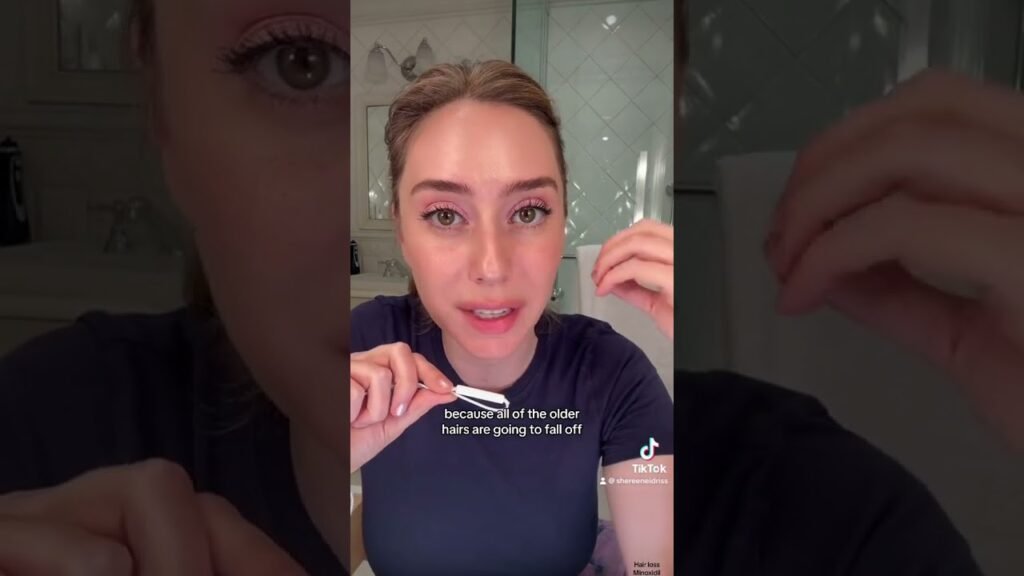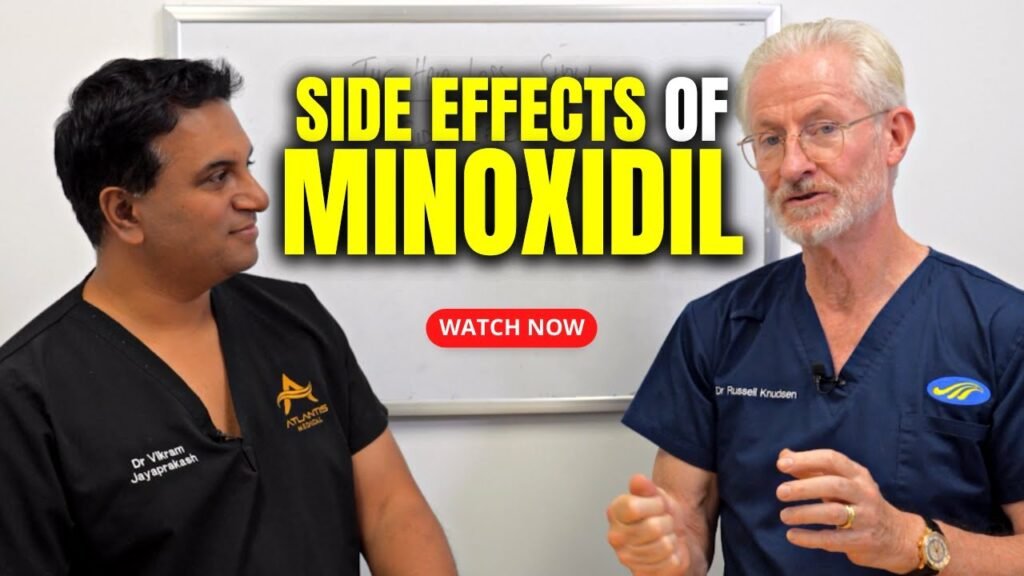What is Minoxidil and How Does it Work?
Minoxidil is a topical medication widely recognized for its efficacy in treating hair loss. Originally developed as an oral medication for high blood pressure, researchers discovered its unexpected side effect of promoting hair growth, which led to its topical formulation specifically for this purpose. Minoxidil is commonly available in liquid or foam form and is applied directly to the scalp, where it works to stimulate hair follicles and promote regrowth.
How Does Minoxidil Work?
The exact mechanism by which minoxidil stimulates hair growth is not fully understood, but it is believed to work by widening blood vessels in the scalp. This vasodilation increases blood flow to hair follicles, providing them with more oxygen and nutrients. As a result, hair follicles are revitalized, and the anagen phase, or growth phase of the hair cycle, is prolonged. This leads to the growth of thicker and stronger hair strands.
Key Benefits of Minoxidil:
– Promotes hair regrowth in individuals experiencing androgenetic alopecia, commonly known as male or female pattern baldness.
– Helps to increase hair density and thickness over time with consistent use.
– Can be effective for both men and women, although formulations and concentrations may vary.
Minoxidils effectiveness can vary from person to person, and results may take several months to become noticeable. It is important to follow the application instructions carefully and use the product consistently to achieve the best results. While minoxidil is generally well-tolerated, some users may experience side effects such as scalp irritation or unwanted facial hair growth. It is advisable to consult with a healthcare professional before starting treatment to ensure it is appropriate for your specific condition.
Common Side Effects of Minoxidil for Beginners
For those new to using minoxidil, understanding the potential side effects is crucial to ensuring a safe and informed experience. Minoxidil, widely used for hair growth, can cause a variety of side effects, particularly when you first start using it. Beginners should be aware that these side effects are often mild and temporary, but its important to monitor them closely.
Initial Shedding
One of the most common side effects that beginners might experience is initial hair shedding. This can be alarming, but it is generally a sign that the treatment is working. Minoxidil stimulates hair follicles, causing older hairs to shed and make way for new growth. This shedding phase typically lasts a few weeks and should subside as the treatment progresses.
Scalp Irritation
Another frequent side effect is scalp irritation, which can include redness, dryness, and itching. This occurs as the scalp adjusts to the new treatment. To mitigate these symptoms, beginners can use a moisturizing shampoo and conditioner to soothe the scalp. If irritation persists or becomes severe, it may be necessary to consult with a healthcare professional.
Unwanted Facial Hair Growth
While less common, some beginners might notice unwanted facial hair growth. This side effect can occur if minoxidil inadvertently spreads to areas beyond the scalp. To minimize this risk, apply the product carefully and wash your hands thoroughly after each application. If facial hair growth becomes a concern, reducing the frequency of application or discontinuing use may be considered after consulting with a doctor.
Understanding the Long-Term Effects of Minoxidil Use
Minoxidil is a popular treatment for hair loss, widely recognized for its efficacy in promoting hair regrowth. However, understanding the long-term effects of Minoxidil use is crucial for individuals considering this treatment option. Over extended periods, Minoxidil can lead to sustained hair growth, but it is important to be aware of both the potential benefits and drawbacks of continuous use.
Prolonged Hair Regrowth and Maintenance
One of the primary long-term effects of Minoxidil use is the maintenance of hair regrowth achieved during initial treatment phases. Users often experience continued hair density and coverage with ongoing application. It’s essential to note that Minoxidil requires consistent use; discontinuing the treatment can result in a gradual loss of newly grown hair. This necessity for ongoing application emphasizes the importance of commitment for those seeking long-term results.
Potential Side Effects
While many users tolerate Minoxidil well, some may experience side effects that can persist with long-term use. Common issues include scalp irritation, dryness, or itchiness. More rarely, users might notice unwanted facial hair growth due to Minoxidils systemic absorption. Monitoring these effects is vital, and consulting with a healthcare professional can help manage any adverse reactions while continuing the treatment.
Adaptation and Diminished Efficacy
Over time, some users might notice a plateau in the effectiveness of Minoxidil. This adaptation can result in slower hair growth or stabilization rather than continued improvement. Understanding this potential outcome helps set realistic expectations and encourages discussions with healthcare providers about possibly combining treatments or adjusting dosages for optimal results.
How to Manage and Minimize Minoxidil Side Effects
When using minoxidil, a popular treatment for hair loss, its crucial to understand how to manage and minimize potential side effects. One of the most effective ways to do this is by ensuring the correct application. Apply minoxidil only to the affected areas and avoid overuse, as this can reduce the risk of irritation and unwanted hair growth in other areas. To further mitigate side effects, follow the recommended dosage instructions provided by your healthcare provider or those found on the product label.
Another key strategy in minimizing minoxidil side effects is to maintain a consistent routine while being attentive to your bodys reactions. Monitor your skin and scalp for any signs of irritation, such as redness or itching, and adjust your usage accordingly. If you experience severe irritation, it might be beneficial to switch to a lower concentration of minoxidil or consult a dermatologist for alternative solutions. They may recommend complementary treatments or adjustments to your regimen to alleviate discomfort.
Lastly, integrating a few supportive measures can help manage potential side effects effectively. Hydrate your scalp regularly with a gentle, non-comedogenic moisturizer to combat dryness, a common side effect of minoxidil. Additionally, maintaining a healthy lifestyle with a balanced diet and adequate hydration can support your bodys natural healing processes, potentially reducing the intensity of side effects. Always consult with a healthcare professional before making any significant changes to your hair care routine or if you have concerns about the side effects you are experiencing.
Frequently Asked Questions About Minoxidil Side Effects
What are the common side effects of Minoxidil?
Minoxidil is a popular topical treatment for hair loss, but like any medication, it may come with side effects. Some of the most commonly reported side effects include scalp irritation, dryness, itching, and redness. Users may also experience unwanted facial hair growth if the product comes into contact with areas other than the scalp. Its essential to follow the application instructions carefully to minimize these side effects.
Are there any serious side effects associated with Minoxidil?
While rare, some users may experience more severe side effects. These can include dizziness, chest pain, rapid heartbeat, and swelling of the hands or feet. If you experience any of these symptoms, its crucial to seek medical attention immediately. Additionally, some individuals may experience allergic reactions, such as a rash or difficulty breathing. Always conduct a patch test before starting Minoxidil to ensure you dont have a sensitivity to the product.
Can Minoxidil side effects be prevented or minimized?
To help prevent or minimize side effects, its important to use Minoxidil as directed. Applying the recommended dosage and avoiding contact with other skin areas can reduce the risk of irritation and unwanted hair growth. If you experience mild irritation, using a gentle, hydrating shampoo and conditioner may help alleviate symptoms. Consulting with a healthcare professional before starting Minoxidil, especially if you have a pre-existing condition, can also provide personalized advice on minimizing potential side effects.


